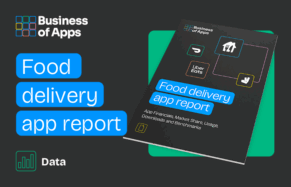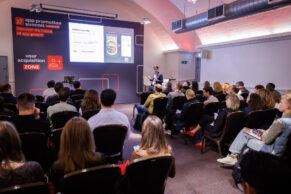Sherina Khalidi stood before the audience at App Promotion Summit London 2025 with the kind of graph that would make any marketing executive wince. The line was stubbornly flat — a visual testament to what she called “not very satisfying” growth at Deezer, the Paris-based music streaming service where she serves as VP of Marketing.
But Khalidi had learned to love that graph, because it told a story about constraints breeding creativity. While Spotify and Apple Music threw marketing dollars around like confetti, Deezer was doing something different: cutting costs, shuttering unprofitable services, and raising prices in a methodical march toward profitability. The company was deliberately tying one hand behind its back in the acquisition game, and Khalidi’s job was to figure out how to win anyway.
“I have not failed,” she began, quoting Thomas Edison. “I’ve just found 10,000 ways that won’t work.” This was the business philosophy that would lead her team to run 82 marketing experiments in a single year, with a failure rate of… exactly one-third.
The alchemy of innovation
In Khalidi’s telling, most companies confuse optimization with innovation. Optimization is the safe play — take what exists, tweak it, iterate, improve by increments. It’s the marketing equivalent of redecorating the same room over and over. Innovation, she argued, requires something more dangerous: breaking the mold and thinking out of the box, those clichéd phrases that usually signal empty corporate speak but in Khalidi’s case described a systematic approach to controlled chaos.
Her formula was deceptively simple: job expertise plus freedom plus trust equals magic. The expertise part was non-negotiable, you had to know your channels inside and out, understand bidding strategies, attribution windows, and all the technical minutiae that are the hallmark of a true professional. But the other two ingredients were where most companies stumbled. Freedom meant giving people permission to fail spectacularly. Trust meant asking for forgiveness rather than permission.
The results spoke for themselves. By year’s end, Deezer had achieved 36% year-over-year growth — not the hockey-stick trajectory of a startup, but remarkable for a fifteen-year-old company operating under profitability constraints. Khalidi’s team had essentially learned to make more with less, and the secret weapon was their willingness to be wrong.
The branding surprise
One experiment in particular upended Khalidi’s assumptions about short-term performance versus long-term brand building. Working with Meta, her team compared two approaches: performance-only campaigns versus campaigns that combined performance with branding, using 2.5 times the budget. Conventional wisdom suggested the branding component would be dead weight in the short term, a necessary evil for long-term health.
Instead, the combined approach delivered twice as many incremental conversions. “It was very surprising and very positive,” Khalidi admitted, because branding campaigns were supposed to be about patience, planting seeds for future harvests, not immediate returns.
The finding exposed a fundamental flaw in how Deezer — and by extension, most of its competitors — thought about acquisition. Their tried-and-true approach relied heavily on deals and promotions: “Three months trial, €0,” the sort of aggressive pricing that drives “tremendous acquisition” but attracts what Khalidi called opportunists, i.e. users with no loyalty, no brand affinity, and “absolutely no reason not to go to any other music streaming service.”
It was a race to the bottom disguised as growth strategy. Every streaming service could offer the same deals, the same trial periods, the same desperation-scented discounts. In Khalidi’s analysis, they were “doing exactly the same as all of our competitors,” which made them “super easy to replace.”
The accidental breakthrough
Sometimes the most important discoveries happen by accident. Khalidi’s team had been struggling with user journey optimization, testing everything from promo headers to redirect strategies. One experiment — changing Google listen actions to redirect users to app store pages instead of the mobile website — was such a disaster they “dramatically lost 76% conversions” and killed the test immediately.
Then the SEO team made what seemed like a routine request: could the product and tech teams improve website loading times to boost search rankings? It was purely about appeasing Google’s algorithm. The technical team obliged, shaving off half a second from loading times.
The result was unexpected as conversion rates jumped from 6% to 10%. Half a second — “it looks like nothing,” Khalidi noted — had delivered the breakthrough that months of deliberate optimization couldn’t achieve. It was a reminder that in the digital ecosystem, everything is connected in ways that defy prediction.
“SEO is sometimes underrated,” Khalidi concluded, “and definitely not dead.”
The long game
Khalidi’s final message was perhaps her most radical: that performance marketers need to think beyond performance. She challenged her team “not only to drive performance, which they do very well, but on top of it to contribute to brand building at the same time.” The result was campaigns that managed to serve both masters — driving immediate ROI while building long-term brand equity.
It’s a philosophy that runs counter to the quarterly thinking that dominates most public companies, but for Deezer, operating under the discipline of profitability, it may be the only sustainable path forward. In a market where everyone can match your prices and copy your features, the only lasting advantage is the one thing competitors can’t replicate: your brand.
Khalidi’s presentation was ultimately about a different kind of innovation — not the flashy, venture-funded kind that makes headlines, but the patient, methodical kind that builds lasting businesses. In an industry obsessed with growth at any cost, Deezer was proving that sometimes the best way forward is to embrace constraints, systematic failure, and the simple fact that failure is often more instructive than success.
The flat line on that opening graph wasn’t a failure, it was a starting point. And for Khalidi, that made all the difference.
Catch Khalidi’s full talk here.


















